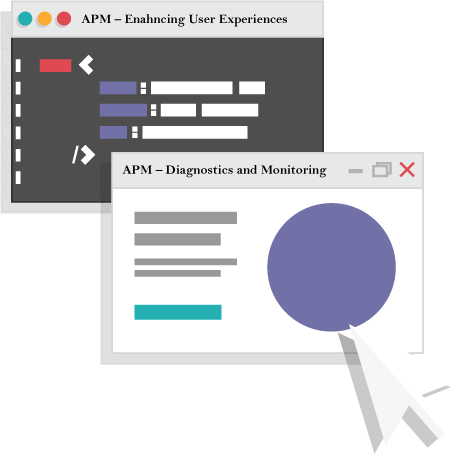Maintaining customer satisfaction is among the most important, if not the most important, element of a successful enterprise. Because of this, many businesses are turning to web and mobile applications to enhance user experiences. While it may seem tending to user satisfaction is a full-time job within itself, application performance management solutions are available to streamline this process while simultaneously enhancing the effectiveness and reliability of all applications. It’s only with an APM solution that you’re given a 360 degree view of web and mobile applications to better monitor its performance and detect the root causes of errors before it causes critical infrastructure errors.
Application Performance Management – Enahncing User Experiences
Perhaps one of the most beneficial aspects of application performance management is its ability to enhance user experiences by continually monitoring the functionality and reliability of all applications. While the exact steps used to accomplish this goal will vary among the businesses and its used applications, the following are essential steps taken to ensure experiences are not only positive, but stable among all users:
- User records and playback of their processes. For example, an effective APM solution is capable of recording patterns from beginning to end, which is then reviewed to ensure all events and transactions were executed according to the standard operating procedures established by your business.
- Continual performance monitoring of applications. While at the beginning of the day an application could be performing at its peak level of efficiency, by the end of the day its performance could dwindle due to traffic and other elements. APM solutions ensure user experiences are universal and constant by continuously monitoring the performance of an application at all levels.
- Collecting data from the back and front end of each application. Part of the monitoring aspect of APM is reviewing data metrics from an application. These metrics are transferred into contextual or graphic form so IT managers are able to determine if an error exists, or if there is a potential for errors to arise.
Application Performance Management – Diagnostics and Monitoring
The primary goal of any APM solution is to provide continuous monitoring of all applications to identify event errors and diagnose the root cause of such errors before they become catastrophic to the integrity of your infrastructure. There are many different avenues an APM tool may take to accomplish this goal; however, the following are universal across all platforms and system specifications:
- Application server monitoring both during peak and off times.
- Transaction tracing to determine whether each line was executed as it should for optimum user experiences.
- Web server monitoring, which tracks network traffic and continuously monitors network infrastructure for existing or potential errors.
Database monitoring to provide consistent the performance across all database platforms. This feature is designed to reduce overall administrative costs associated with manual monitoring/management while simultaneously improving service levels and repair time.

